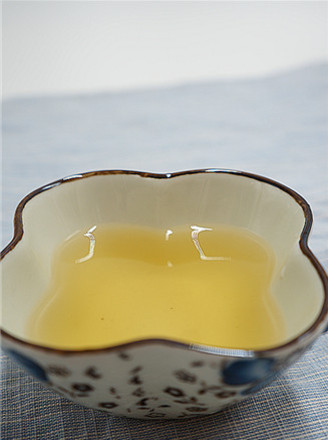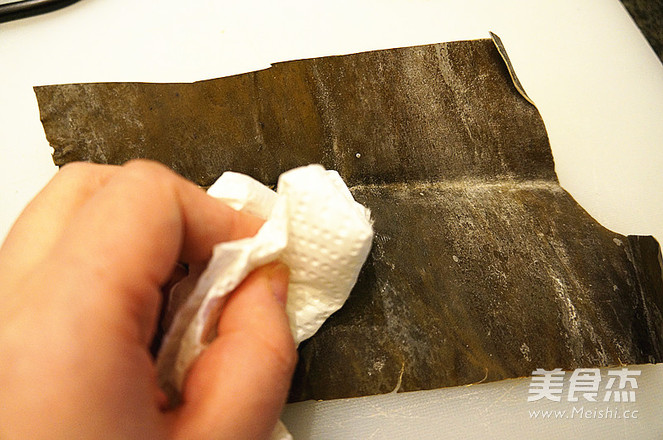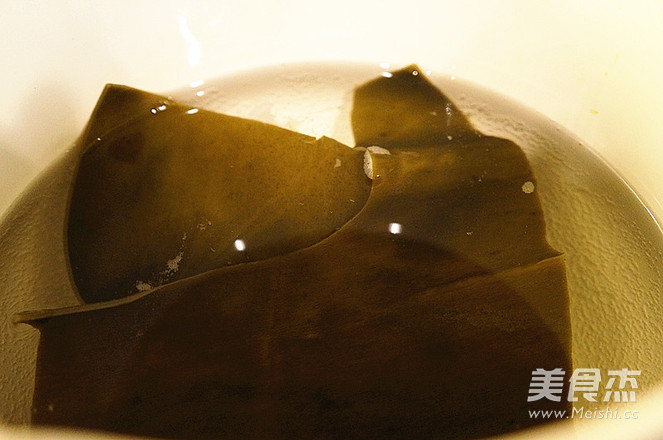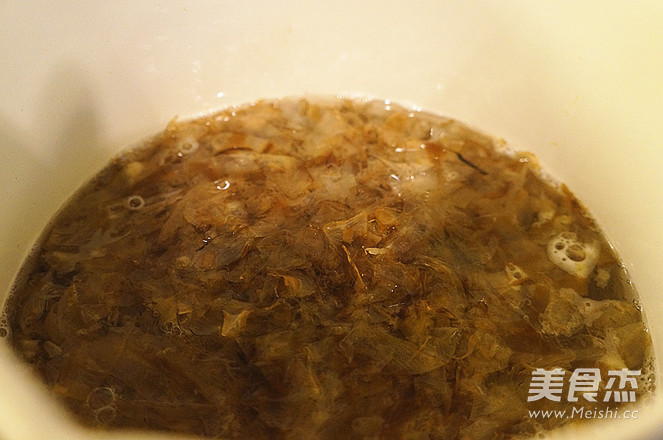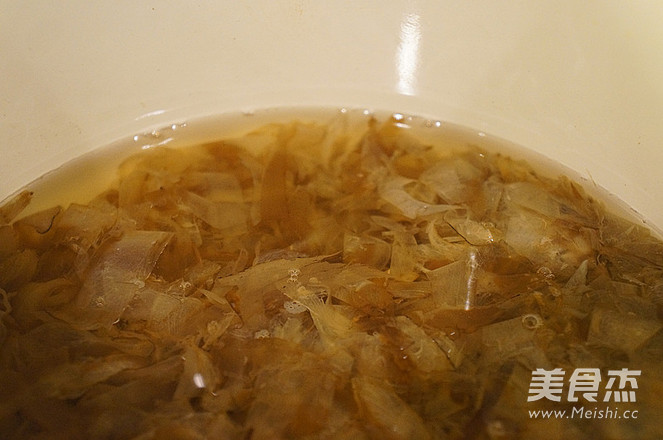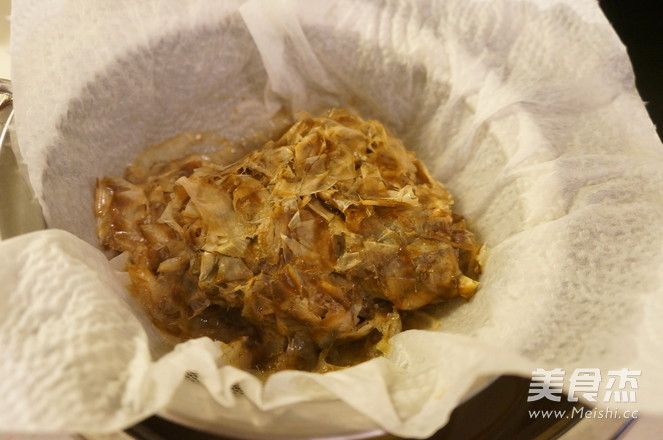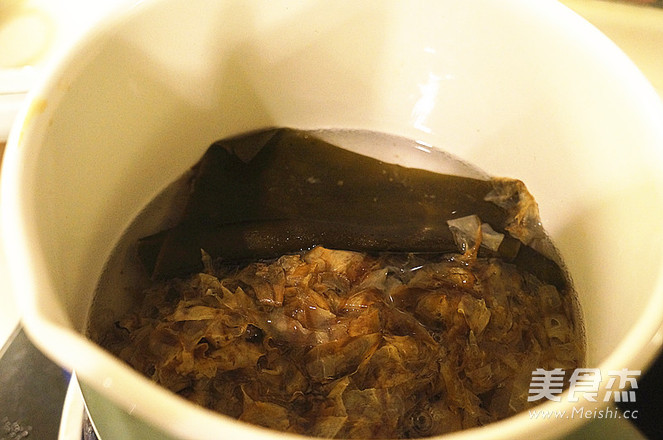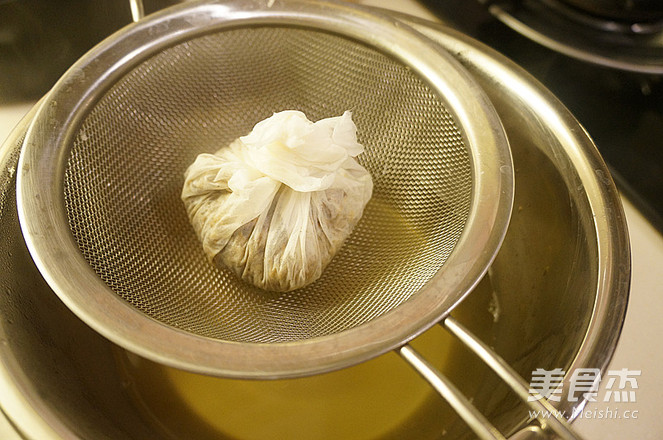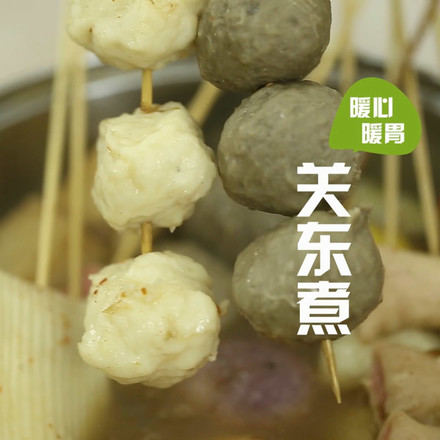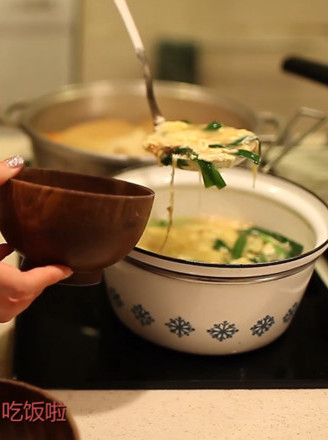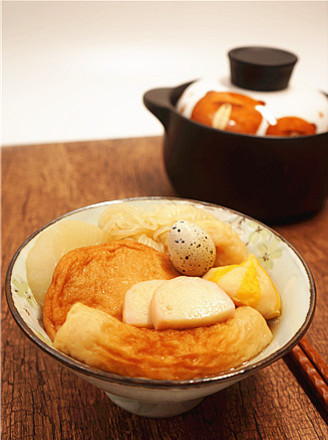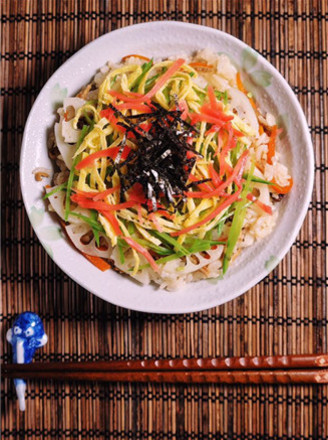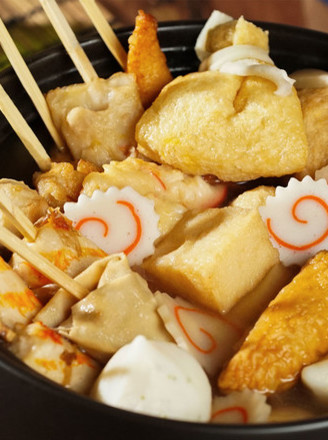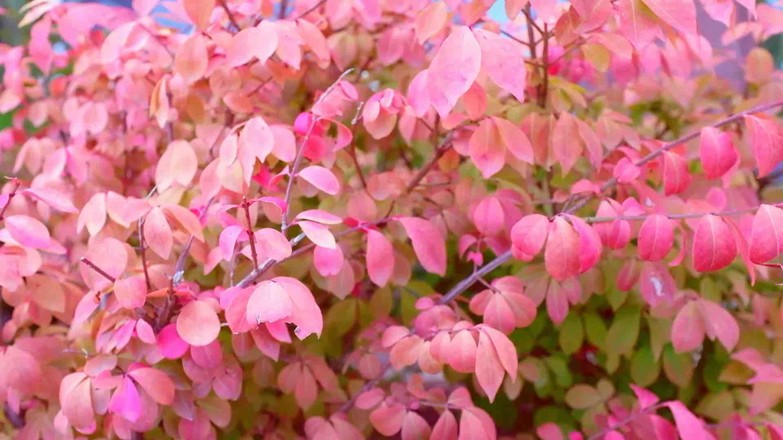Japanese Style Broth
1.
Use a kitchen paper towel or a clean cloth to gently wipe the kelp, being careful not to wipe off the white on it.
2.
Put the kombu in cold water (700ml) and heat it on medium heat until some bubbles emerge, and the kombu naturally floats. Turn off the heat and quickly remove the kombu.
3.
Put in the wooden fish flowers.
4.
At this time, some foam will appear, filter it out.
5.
Let it stand for 15-20 minutes until the muyu flower sinks to the bottom.
6.
Put a kitchen paper towel on the strainer, pour the soup whole, and let the soup slowly filter into the container. Don't squeeze the katsuobushi flowers during the process to keep the soup clear. This is the "one-time stock" and is an essential raw material for Japanese ingredients.
7.
You can use the wooden fish flower and kelp after boiling the broth again.
8.
Take 500 ml of water (approximately 70% of the first time), add the wooden fish flower and kelp that have been boiled once, and bring it to a boil on high heat. Turn to low heat and keep it boiling for 10-15 minutes.
9.
Spread kitchen paper towels, filter, and finally tighten the paper towels to press out as much soup as possible. This is the "secondary stock".
Tips:
1 Kombu is kelp. You can choose kelp from Japan or buy domestic kelp.
2 The bonito flavour will be stronger, but it needs to be boiled for a longer time.
3 The katsuobushi can be directly added to the rice and eaten with a little soy sauce. This is the "cat rice" in the Japanese manga "Late Night Canteen".
4 Bonito, also known as bonito, can be torn into small pieces and added with peanuts to make porridge, which is the common bonito peanut porridge in the Pearl River Delta.
5 The primary broth is more suitable for making dishes that need to reflect the broth, and the secondary broth is suitable for stews and hot pots.
6 Seal the stock and put it in the refrigerator for a week without any problem.

